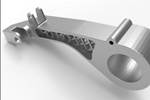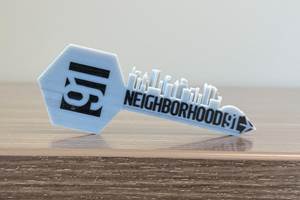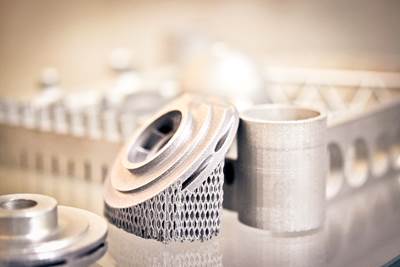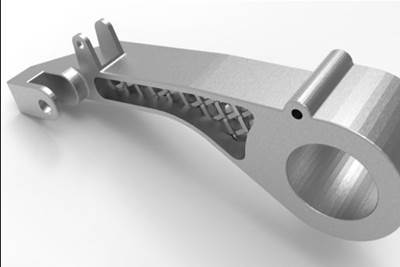The Additive Manufacturing Process: An Expectation of Consistency
In production additive manufacturing, producing good parts isn’t enough. Understanding the full fabrication process is the first step toward controlling it and ensuring ongoing consistency in the end-use parts.
Share
Read Next
Editor’s note: This article is the first in a series on additive manufacturing process verification composed by Michael Hayes, a former AM leader at Boeing and current ADDvisor for The Barnes Global Advisors. In his previous position Hayes qualified and produced hundreds of polymer AM parts for the aerospace industry. In this piece, he shares his perspective on establishing consistency in AM through understanding and controlling the entire process; future installments will focus on the importance of data and how to get to true certification of 3D printed parts for flight. — Stephanie Hendrixson, Executive Editor
Let’s take a trip to your favorite burger joint. The burger is always fresh and flavorful and even sometimes looks too good to eat! But, what if one day your burger wasn’t the same? It comes to you flat and dry, and it lacks all the good flavor. You had an expectation that you would get the same burger you always had, and yet somehow, something went wrong. Something happened to the consistency of the burger, and the burger joint is probably going to lose your business by not delivering a consistent product!
How does this analogy relate to additive manufacturing (AM)? Much like the burger joint is expected to make a consistently good burger, the manufacturing industry expects suppliers to provide consistent additively manufactured parts.
Let’s step back and take a brief journey through the history of AM to set the stage for how and why consistency is so important. The roots of AM are in what was then called “rapid prototyping.” The term prototyping implied one-off and not “real” production. Early AM technologies sufficed for supporting prototyping; users could live with scrapping two builds for every successful one. However, the term prototype also has a negative connotation — the word “prototyping” tends to imply an expense, not an income. A prototype is a step to get to the end product. It is not what is actually sold to make money. As this new technology matured, it was eventually named additive manufacturing by the ASTM F42 subcommittee. The word “manufacturing” implied that it would provide a sale of goods, a revenue. The problem was that just calling something “manufacturing” does not necessarily make it so. Manufacturing has to be earned.
Having spent the last 20+ years focused on maturing additive manufacturing for production applications, I have had the opportunity to work with many AM companies. Some of them successfully launched their invention, idea or company into the market becoming leaders within their respective industries. Others did not find such success. What made the difference? Obviously, there are many variables that enable success, but common enablers among those companies still exist today. There are early indicators of which AM suppliers have a good chance of creating a successful business, because they follow important steps to produce high value, high quality parts. They don’t skip steps. There is an order; a “process.”
An article by Dr. Kevin Slattery titled “Certification and Qualification in Additive Manufacturing Simplified” highlights four aspects of supplier qualification, required to put a part into any regulated industry application:
- Facility
- Machine/Process
- Part, and
- Lot Acceptance.
If you take one big step prior to these important qualification aspects, you quickly see that one of the first enablers, or steps for success, is in the control of how a part is fabricated. This is simple to say, but harder to do! This requires a full and total understanding of the process of how the part is built. It is this real understanding of the entire fabrication process that can create consistency, and consistency is an expectation all of us have in almost everything we do.
In AM, the end user has an expectation that they are going to get a good part, every time. As AM continues to grow into new manufacturing spaces, it must demonstrate this consistency. Most AM-enabled products require an entire value chain of suppliers to achieve the end product, therefore every player is responsible for consistency. It cannot be achieved by luck. Consistency must be a goal during the development phase and throughout the lifecycle of the product.

Many factors affect the consistency of the additive manufacturing process in addition to material and process specification. All must be controlled for an additive process to deliver consistent results. Photo Credit: The Barnes Global Advisors
Two critical first steps for establishing consistency are the creation of a material and a process specification. The figure highlights other factors that impact consistency including inspection, postprocessing, quality control, and packaging and shipping. It’s important to also note less obvious variables like storage, training, maintenance and procurement. For a supplier to move its process into production, these other factors will also need to be controlled.
“How do we know that we have an acceptably consistent process?” As we will explore in subsequent articles, this is a very important question. The question becomes foundational to every following step. If good parts are coming off the machine but without a controlled or documented process, one can’t give a shrug and move one. For each AM technology, the creation of process controls and the subsequent verification is one of the enablers towards a successful manufacturing business.
The AM part customer has an expectation of consistency. Just like the longevity of your favorite burger joint, consistency becomes not just an expectation, but a requirement for the future of your business.
In the next article we will explore the question of “How much data is enough?” An important point here, which has often been ignored in AM, is that the data generation comes after the processes have been controlled and a certain amount of consistency has been achieved. It is the next step in this three-part series.
About the Author
Michael Hayes
A recent addition to The Barnes Global Advisors, Michael Hayes is the principal ADDvisor on polymer and composites for the group. He previously spent more than 34 years with McDonnell Douglas/Boeing in structural design and additive manufacturing (AM). For the past two decades, he technically and strategically led the evolution of polymer AM from rapid prototyping into aerospace production through the engineering of material and process developments, requirement definitions, application selections, qualifications, testing, certifications, and technology transitions. Hayes’ AM knowledge and strategic direction helped Boeing become a leader in the implementation of polymer AM, and his technologies have been utilized across the global Boeing enterprise making him the advisor and consultant he is today. He was the Boeing team leader in the founding of America Makes on the original governance board and a key founding representative of the Direct Manufacturing Research Center (DMRC) in Paderborn, Germany. Hayes holds 15 U.S. patents with two pending. He has a Bachelor of Science degree in aerospace engineering and a Master of Science degree in mechanical engineering, both from the University of Missouri-Rolla.
Related Content
How Norsk Titanium Is Scaling Up AM Production — and Employment — in New York State
New opportunities for part production via the company’s forging-like additive process are coming from the aerospace industry as well as a different sector, the semiconductor industry.
Read MoreThis Drone Bird with 3D Printed Parts Mimics a Peregrine Falcon: The Cool Parts Show #66
The Drone Bird Company has developed aircraft that mimic birds of prey to scare off problem birds. The drones feature 3D printed fuselages made by Parts on Demand from ALM materials.
Read MoreWhat Is Neighborhood 91?
With its first building completely occupied, the N91 campus is on its way to becoming an end-to-end ecosystem for production additive manufacturing. Updates from the Pittsburgh initiative.
Read MoreAt General Atomics, Do Unmanned Aerial Systems Reveal the Future of Aircraft Manufacturing?
The maker of the Predator and SkyGuardian remote aircraft can implement additive manufacturing more rapidly and widely than the makers of other types of planes. The role of 3D printing in current and future UAS components hints at how far AM can go to save cost and time in aircraft production and design.
Read MoreRead Next
Updated Definition Makes Way for AM Part Production
Additive manufacturing is finding its footing, and a new standard definition in ISO/ASTM 52900:2021 shows that AM is for more than prototyping.
Read MoreSpeed Is Relative in AM: A Data-Driven Comparison of Multi-Laser Powder Bed Fusion and Binder Jet Processing
There is a difference between the effective print speed and the actual cost to produce the component with AM. John Barnes compares binder jet processing with powder bed fusion for metal parts.
Read MoreBike Manufacturer Uses Additive Manufacturing to Create Lighter, More Complex, Customized Parts
Titanium bike frame manufacturer Hanglun Technology mixes precision casting with 3D printing to create bikes that offer increased speed and reduced turbulence during long-distance rides, offering a smoother, faster and more efficient cycling experience.
Read More




















